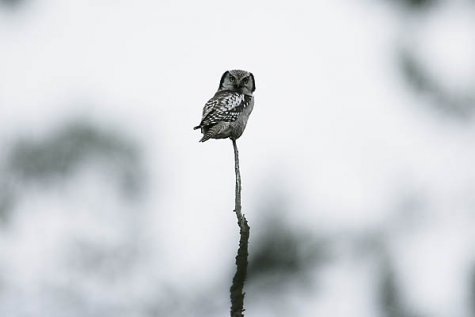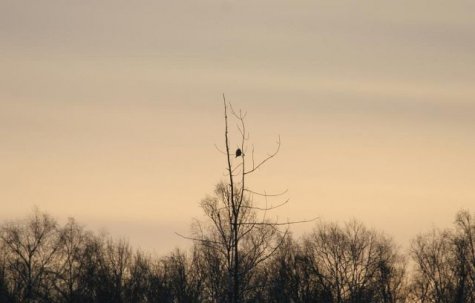Birder´s
Birder’s diary
Birder's diary - 10.01
Diary kept by: Margus Ots, linnuvaatleja.ee
Photo: Arne Ader
Photo: Arne Ader
Pygmy owl
January 10
I made a short trip in Tartumaa today, in the forests at Laeva. The morning was cold, the car thermometer even said -12 degrees. Total silence reigned in the forests, no woodpeckers were knocking and the tit flocks were quiet. Only a few ravens croaked in the distance. In cold midwinter no one wants to call. But some more species were added to my year list nonetheless. In two places I found nutcrackers. Even they were silent, otherwise they are quite loud-voiced. The lesser spotted woodpecker was added to the woodpecker list. I didn’t find it by its call or knocking, it was busy in a tit flock and flew just past my nose into a birch top
.
But the most interesting creature of the day was the hawk owl, a rare winterer and passing migrant here. I found it in the early morning twilight in the top of a tree far away at the verge of a felling, surveying the neighbourhood. Not wanting to disturb the bird I observed it for a while in my telescope and only clicked a few photos from a distance. In the foggy photo the typical silhouette of the species can be seen, quite sufficient as evidence. My year list now contains 92 bird species.
I have been asked if the observations for the various lists must have some kind of proof to be accepted? Yes, we have agreed, together with the birdwatchers, on some general rules. For species that the Bird Rarities Committee (RC) handles the matter is simple – the observation must be approved by the committee. For common species it is also simple – generally the observer is trusted. But there is a number of species, the minor rarities or miniraries, that are comparatively rare visitors in Estonia but the RC does not handle the observations. For a record attempt (for instance a calendar year record) good practice if you are on your own is that for these minor rarities at least some evidence should be collected (photo, recording of call etc.), or you can invite another birder to twitch. A more convenient option is actually to go on trips together; other more experienced birders can confirm an identification if needed. At a birdwatching competition for instance (Estonian Open, the Inter-city bird rally etc) a species cannot be noted until more than half the team has seen the same bird and confirmed the identification.
I have been asked if the observations for the various lists must have some kind of proof to be accepted? Yes, we have agreed, together with the birdwatchers, on some general rules. For species that the Bird Rarities Committee (RC) handles the matter is simple – the observation must be approved by the committee. For common species it is also simple – generally the observer is trusted. But there is a number of species, the minor rarities or miniraries, that are comparatively rare visitors in Estonia but the RC does not handle the observations. For a record attempt (for instance a calendar year record) good practice if you are on your own is that for these minor rarities at least some evidence should be collected (photo, recording of call etc.), or you can invite another birder to twitch. A more convenient option is actually to go on trips together; other more experienced birders can confirm an identification if needed. At a birdwatching competition for instance (Estonian Open, the Inter-city bird rally etc) a species cannot be noted until more than half the team has seen the same bird and confirmed the identification.










